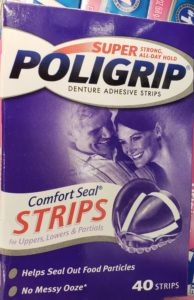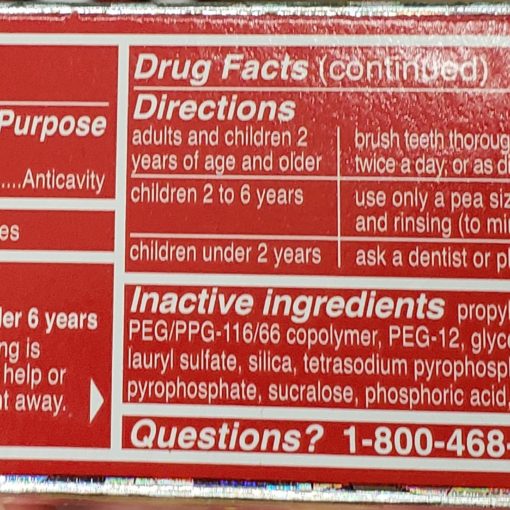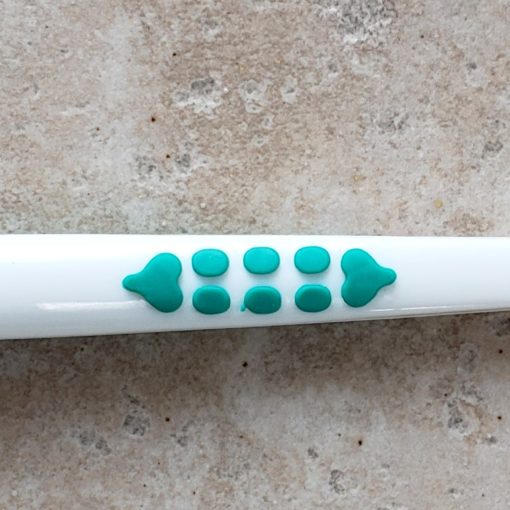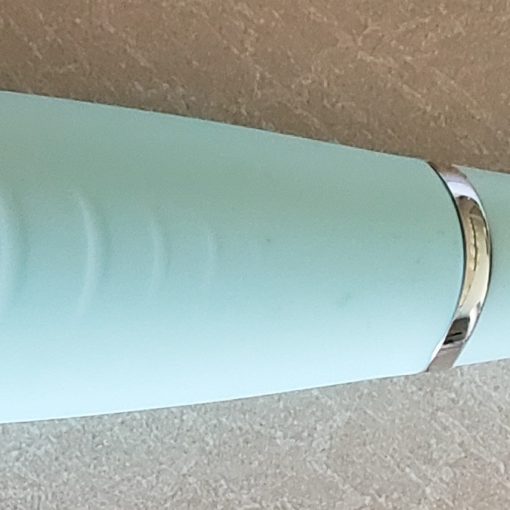Denture Adhesives
Denture adhesives true purpose is to help dentures stay in place. Dentures ideally shouldn’t need any adhesion, they should fit properly for the most part. Reasons for denture adhesion would be if the denture becomes loose — usually by weight loss or gradual bone loss. When these circumstances happen a reline (resurfacing the inside portions of the denture) or a new denture may be required. An ill-fitted denture feels like poor fitting shoes, by causing sores, discomfort or flapping of the denture — increasing that embarrassing looseness and clacking when talking and eating. It’s important to let your tissue breath and heal, regularly removing your denture at night will prevent sores or tender spots. If gum irritation happens, keeping the denture out more often and regularly using a warm salt water rinse will promote faster healing.
Denture adhesives come in forms of creams, powders and strips. You may consider trying all types to see which is easiest for application, stability and overall a better feel that accomplishes the mission. It’s important to follow the instructions for each form, to achieve the best results. Start slowly and minimally, more can be added, rather than wasting the product and having to remove too much.
Creams
Denture creams, also referred to as pastes and denture glue. This form is the most popular type. It’s simple to apply and provides a strong bond. Creams can be placed wet or dry, although slightly wet seems to work better. Apply once a day, if more than that is required it’s a sign the dentures are not fitting well and see a dentist for a better fit. It may take a few times to apply the right amount of cream, just keep altering the amount if needed until you find that magic measure.
How to Use
- Clean and dry your dentures
- Apply the cream in short strips away from the denture edges
- Rinse mouth before inserting denture
- Press denture into place, hold firmly, and bite down for a few seconds to secure hold
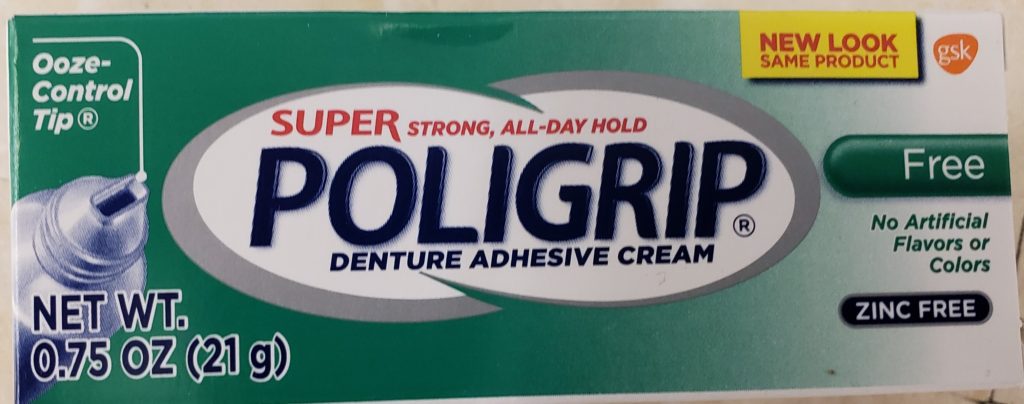
Strips
Denture strips also, referred to as cushions, pads, or wafers. Strips are easiest to use and tend to be less messy. The adhesion is in the strip, and the product is a pre-controlled portion. For a custom fit these strips may need to be cut for your particular denture.
How to Use
- Clean and dry denture
- With dry hands peel strips and lightly moisten the strip one at a time
- Place strip in the body of the denture, away from the edges
- Rinse mouth with water prior to inserting denture
- Press denture in place, hold firmly and bite down
Powder
Denture powders are just known as powders. They are easier to clean and do not ooze.
How to Use
- Clean dentures thoroughly and leave wet
- Spray powder very lightly and evenly onto body of denture
- Rinse mouth before inserting dentures
- Thoroughly shake off any excess powder
- Press dentures into place hold firmly and bite down for a few seconds to secure a firm hold
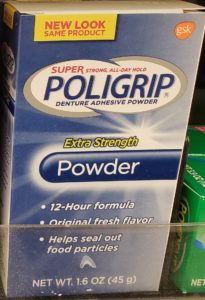
Common Brands: Fixodent and Poligrip (zinc-free)
Less Common Brands: Wernets (powder) , Ezo and Sea Bond (strips), Secure (cream)
ADA Approved Brands: Effergrip Denture Adhesive, Adhesadent Denture Adhesive Cream
Natural Alternative: OlivaFix uses 35% Extra-Virgin Olive Oil, 0% Zinc, 0% Petrolatum and 0% Parabens


